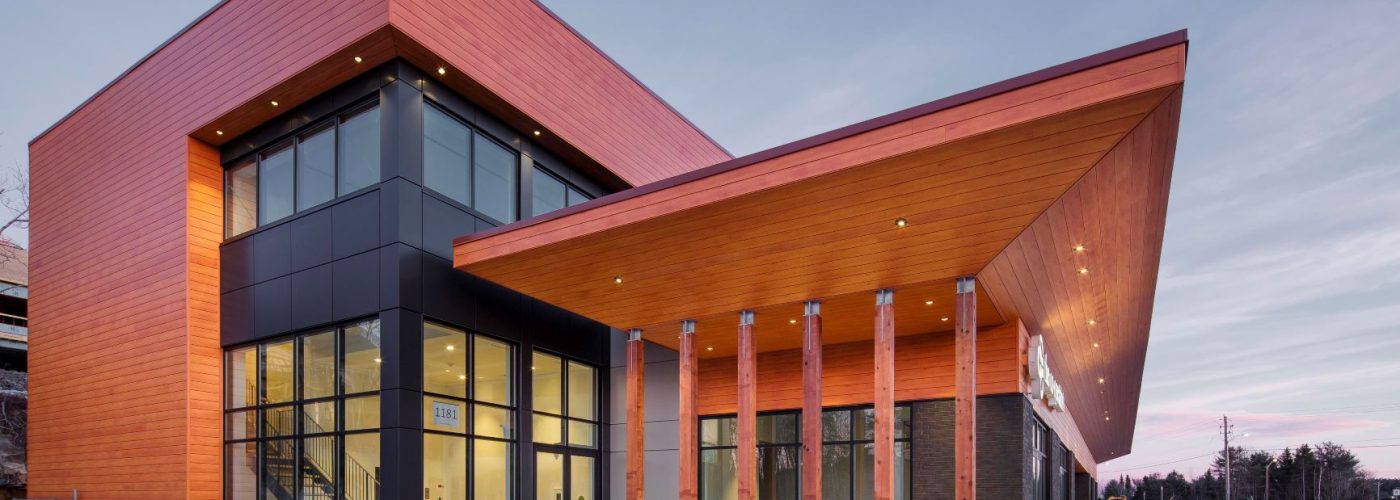Located along the Vltava river, Prague’s Dancing House is a hotspot for tourists and admirers of architecture. While its sloping structure gives the illusion that the building is dancing, the design offers nothing in the way of structural benefit. But would a building without such an eye-catching design feature gain the same appreciation? Here, Nick Cowley, managing director at exterior cladding and outdoor living product supplier Endurawood, explains how cladding can take building design to new levels.
Cladding has been popular in the construction industry for decades. It offers many benefits including thermal insulation, weatherproofing and protection of the building’s structure.
Cladding does not support the structure of a building, but instead acts as a second skin to the exterior. The National BIM Library (NBS) categorises cladding into categories such as H10 for patent glazing, H21 for timber weatherboarding and H51 for natural stone slab features. While cladding offers a range of practical benefits, its design potential is often overlooked.
All a façade
Apart from adding style and colour to a building’s design, cladding can also be used as an architectural enhancement. Building design is important and, particularly for high rise structures, it can be difficult to distinguish one building from the next. Cladding can transform a usually overlooked building intoan eye-catching display.
While cladding is traditionally applied to the entire exterior of the building, it can be used to decorate and accentuate specific areas. A façade is a simple addition that can dramatically improve the appearance of a building. For example, The Center for Wellbeing in Edinburgh, Scotland used timber cladding to create a 3D façade of the organisation’s name, Thistle. The façade creates an exterior that provides a friendly welcome, just like the staff on the inside.
Low maintenance
Unlike other common exterior finishes such as pebbledash or paint, which can become tarnished from weather conditions, cladding is built to last. As one of the main purposes of installing cladding is to provide a weatherproof barrier for the building, cladding must be able to withstand harsh weather conditions.
While some cladding materials are naturally more durable than others, they still require additional treatments to increase their durability. These treatments can vary depending on the material. Aluminium cladding from Endurawood is corrosion, freeze and frost resistant and non-porous.
Aluminium reacts with oxygen in the air, which forms a thin layer of oxide on the surface of the material. This works to eradicate corrosion caused by moisture, pollution and mould growth, which reduces maintenance and costs, maintaining the building’s design.
Refurb over replace
Typically, some building refurbishments require a substantial amount of work when undergoing upgrades. However, minor refurbishments to the exterior can be resolved with cladding. Using cladding to refurb is a quick way to improve the appearance of a building. Building Abseiling techniques allows virtually any job to be carried out by our experienced technicians on buildings or structures without the need for expensive and disruptive methods, such as scaffolding or cradles
Cladding is versatile enough to be applied by a homeowner or installer for larger projects and is usually applied with ease, which means it’s ideal for both home and large-scale refurbishments.
Without its unique design, it’s unlikely that the Czech capital’s dancing landmark would attract as many tourists as it does today. While architects must always consider the structural performance of building materials, design remains an important consideration. Alongside its weatherproofing and insulation benefits, cladding can help take building design to new levels.





